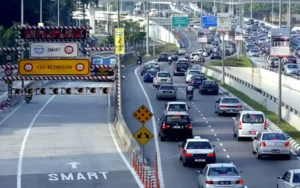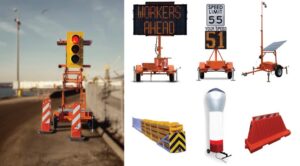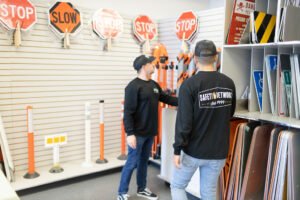Traffic Control Blog
Stay up to date on current traffic regulations, updates, and other insights.

Speeding in work zones is the #1 cause of worker fatalities—accounting for 42% of deaths nationwide (FHWA 2023–2025). Traditional “SLOW” signs reduce speeds by only

In California construction, nothing derails a project faster than missing or late traffic control equipment. A single missing truck-mounted attenuator, a faded sign that fails

Lane closures disrupt traffic flow, increasing congestion by 40% and crash risks by 25%, per FHWA data—yet proper planning cuts delays by 60%. Safety Network

Automated Flagger Assistance Devices (AFADs) revolutionize work zone safety by replacing human flaggers with remote-controlled systems, reducing exposure to traffic by 100% and cutting flagger-related

Work zones on highways, streets, and construction sites demand precision and vigilance to protect workers, drivers, and pedestrians. One overlooked element can lead to accidents,

Traffic assets like signs, barriers, and message boards are vital for ensuring safety and compliance in construction zones, highways, and urban areas. Constant exposure to


